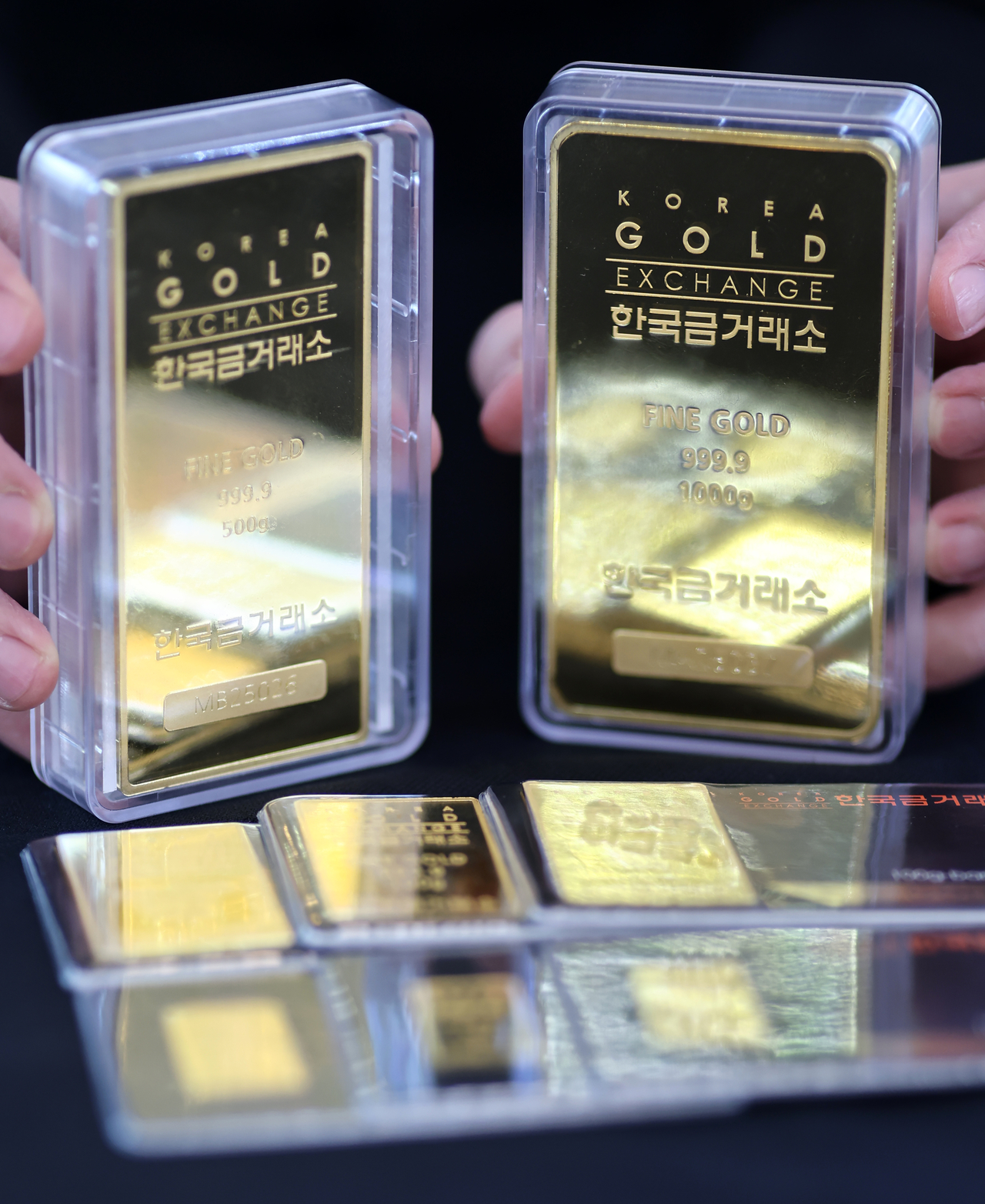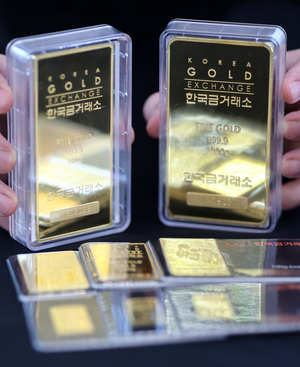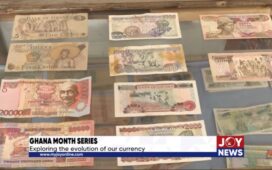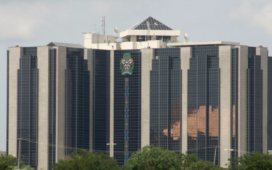
While central banks around the world jump on gold to diversify their reserves, the Bank of Korea’s gold reserve has remained at a standstill for over a decade despite gold’s increasing appeal as a safe-haven asset amid heightened volatility in the global market.
Since 2013, Korea’s gold reserves have remained unchanged at 104.4 tons for the past 12 years, with its share in total foreign currency reserves standing at 2.1 percent.
This is in stark contrast to other major countries that have shown a clear trend of increasing their gold holdings.
The gold holdings of the United States, the world’s largest gold reserve, reached 8,134 tons in 2024, accounting for nearly a quarter of the world’s gold reserves. The US is solidifying the dollar’s status as a primary reserve currency through its enormous gold reserves, which takes up 75 percent of its foreign currency reserves.
The expansion of China’s gold reserves was even more noticeable in recent years. China’s gold reserves have increased to 3,545 tons, and gold’s share of foreign currency reserves has also increased to 5.5 percent as of 2024.
Although gold prices have hit a peak of over $2,900 per ounce, it is widely reconsidered a safe asset for investors seeking to protect their wealth as other assets become volatile amid economic uncertainty and geopolitical turmoil. The Bank of Korea, however, said it is in no hurry to join the gold buying frenzy.
This is because gold cannot be converted into cash as immediately as stocks and bonds.
“For example, US bonds and stocks are almost seven times more liquid than gold. Assets that offer an easier way to convert into cash matter because central banks have to deal with a great volume of assets … it’s not one or two gold bars they’re talking about,” said a BOK official responsible for managing foreign reserves.
The high volatility of gold is another factor that makes the Korean Central Bank reluctant to add more to its portfolio.
Previously, the BOK purchased a total of 90 tons of gold between 2011 and 2013. As the international gold price, which was around $200 per ounce in the early 2000s, soared to nearly $1,900 in 2011, demand for gold purchases increased.
However, the price of gold plummeted to around $1,000 per ounce in 2015, and there has been a strong trend of caution over the high volatility of gold’s price ever since.
Despite the liquidity and volatility issues, other central banks are expected to remain keen buyers of gold.
According to a survey conducted by the World Gold Council on central banks in 68 countries last year, 68 percent of responding central banks said they would increase the proportion of gold reserves in the next five years.
On the other hand, 62 percent of respondents said they would reduce the proportion of the US dollar, suggesting that major economies recognize gold as a safe asset and are seeking to diversify their foreign currency reserves.
“It seems geopolitical issues drove some central banks to purchase more gold. Countries such as China and Russia, which could face sanctions and other difficulties in making transactions in US dollars are showing higher demand for gold to replace their dollar asset. But those are not concerns that South Korea has because it is a strong trading partner to the US,” the BOK official said.




